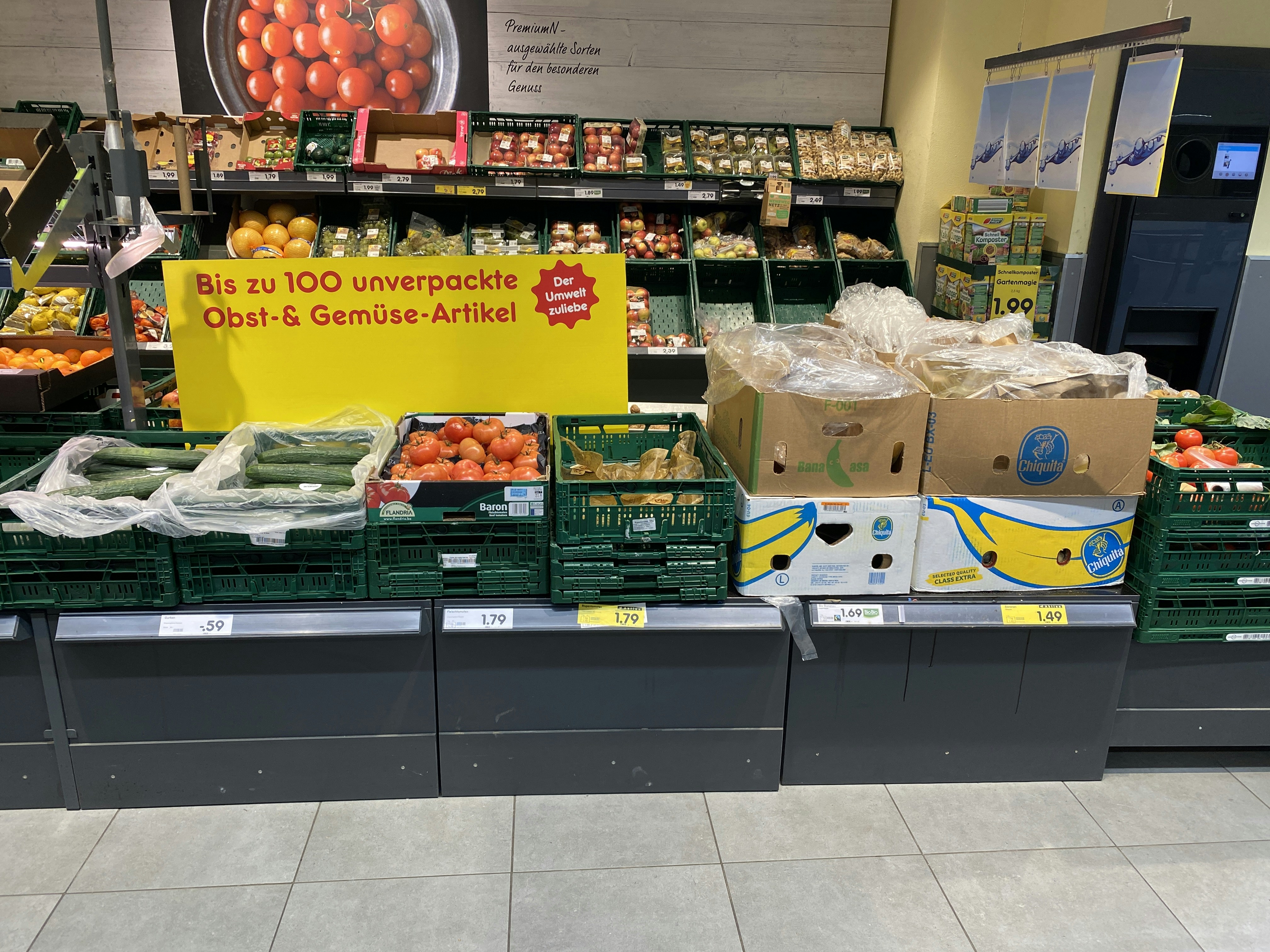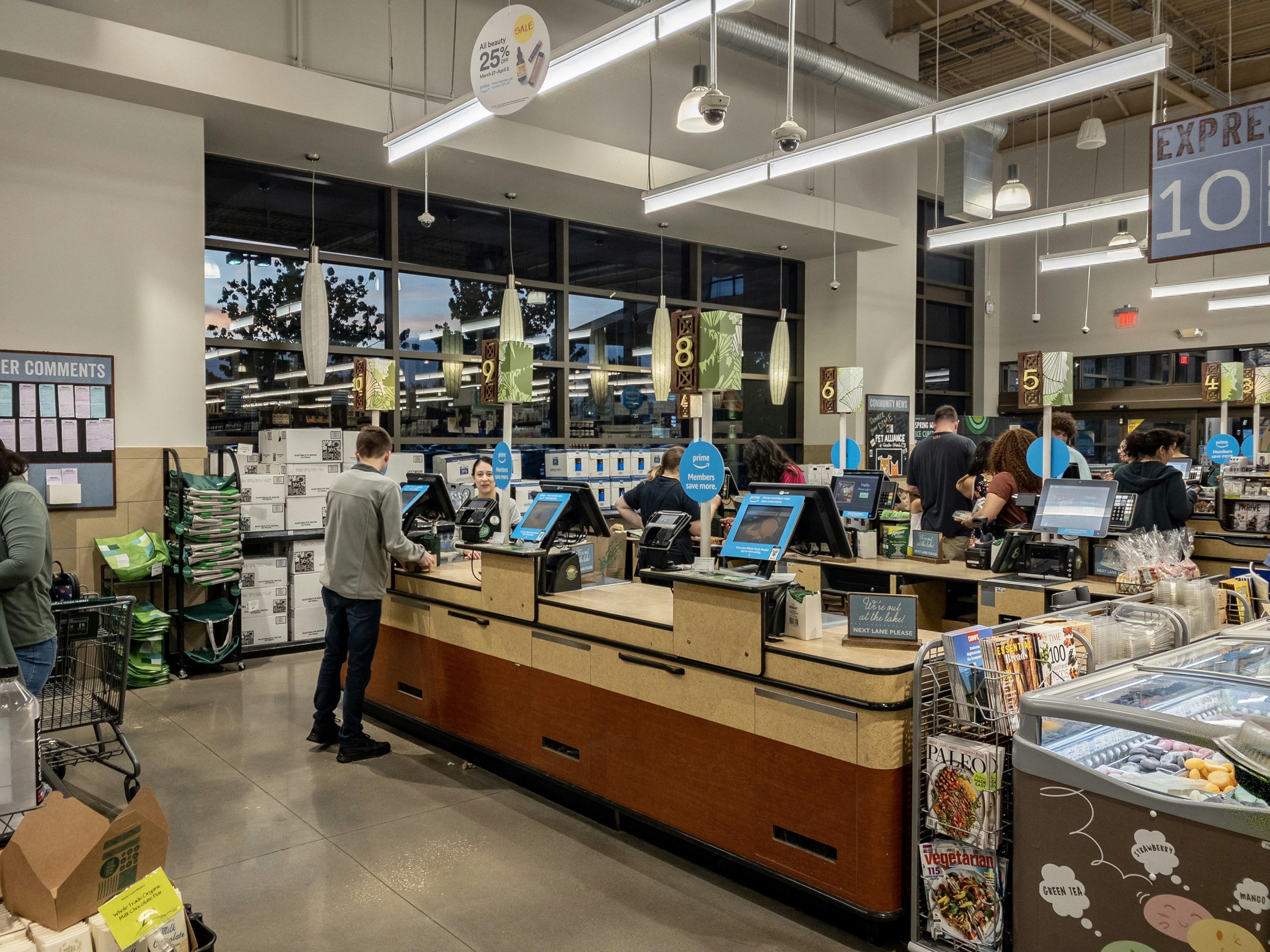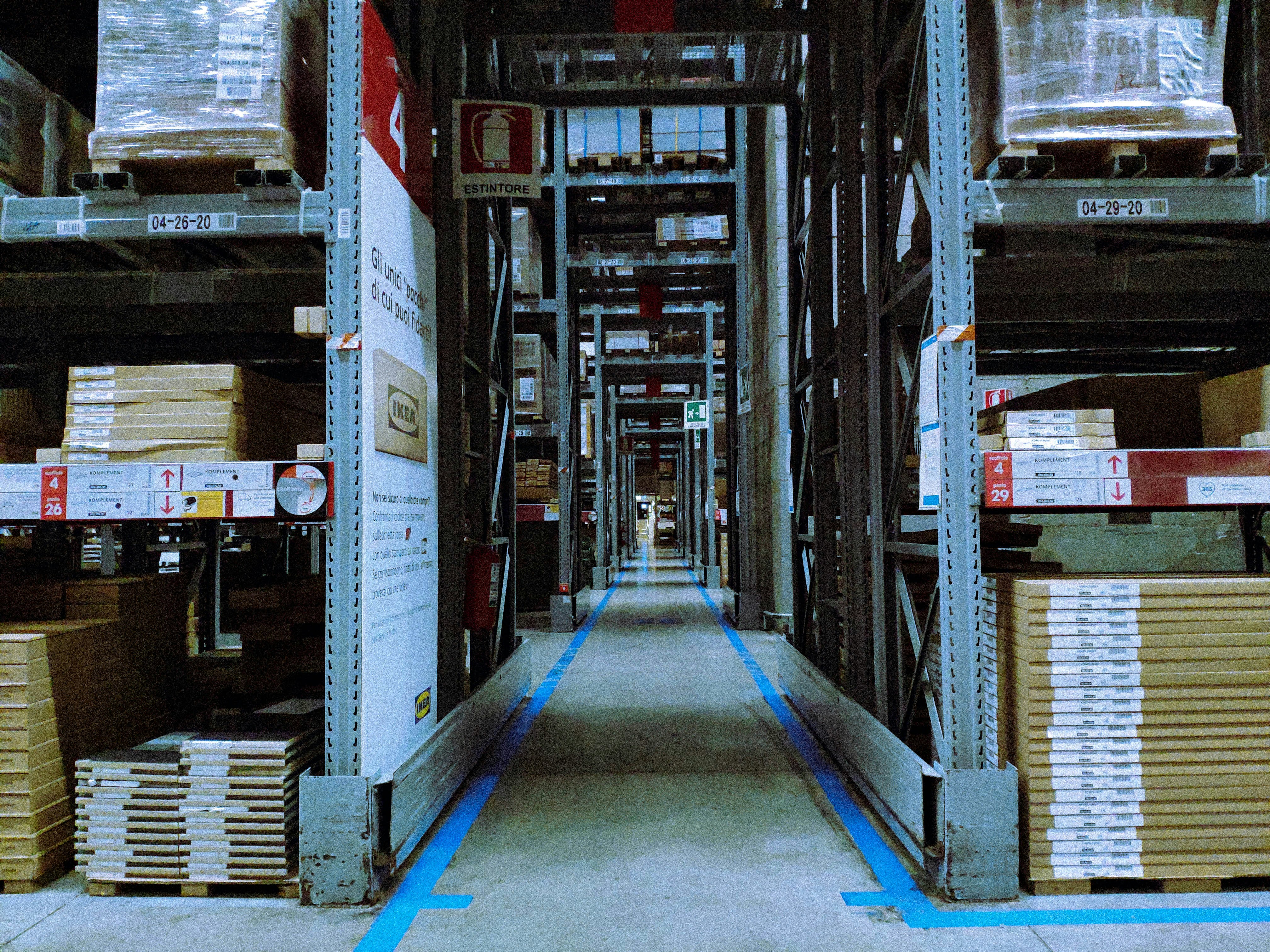Introduction to Barcodes on Fresh Produce
Barcodes are vital tools that enhance the efficiency and accuracy of inventory management, sales tracking, and consumer interactions within the fresh produce sector. A barcode is a machine-readable representation of data, typically consisting of a series of parallel lines or squares that encode information about a product. This technology allows for quick scanning and retrieval of information, dramatically streamlining processes in various industries, particularly in food distribution.
In the context of fresh produce, barcodes serve multifaceted roles. They provide essential details about the items, including origin, type, price, and expiration dates. Such information is crucial for retailers to maintain stock levels and ensure the freshness of perishable goods. By facilitating rapid data entry, barcodes minimize human error and mitigate the risks associated with inventory discrepancies. As fresh produce is often subject to tight supply chain dynamics, real-time tracking ensures that inventory levels are accurately maintained.
Moreover, barcodes play a significant role in improving sales tracking. Retailers can analyze sales trends related to specific produce items, allowing them to tailor inventory decisions based on consumer preferences. This data-driven approach can lead to more effective marketing strategies, ensuring that popular items are readily available while minimizing waste from unsold stock.
The importance of barcodes extends to consumer interactions as well. Many consumers now seek transparency regarding their food sources, including nutritional information and production practices. Barcodes can facilitate the sharing of this information through mobile scanning technologies, allowing consumers to make informed decisions about their purchases. By leveraging barcodes, both consumers and retailers benefit from enhanced communication, contributing to an optimized food supply chain.
Types of Barcodes Used in Fresh Produce
Barcodes are a fundamental aspect of the supply chain in the fresh produce industry, serving various functions to enhance efficiency and accuracy. Among the most common types of barcodes utilized on fresh produce are UPC codes, QR codes, and PLU codes, each offering unique features and applications.
The Universal Product Code (UPC) is widely recognized and frequently employed in retail settings. This barcode consists of 12 numerical digits and is primarily used for tracking products throughout the supply chain. UPC codes streamline the checkout process by allowing cashiers to quickly scan items, thus reducing wait times and enhancing customer service. In the context of fresh produce, UPC codes may be found on packaged items, enabling retailers to manage inventory effectively.
On the other hand, Price Look-Up (PLU) codes are specifically designed for loose, unpackaged fresh fruits and vegetables. These codes are typically four or five digits long, and they provide essential information regarding the product, such as its type, size, and price. Unlike UPC codes, PLU codes serve mainly retail settings and help ensure that customers are charged accurately for their purchases. This coding system not only benefits retailers but also helps producers and suppliers maintain better records of their sales.
Moreover, Quick Response (QR) codes have emerged as a progressive approach in the fresh produce sector. These two-dimensional barcodes can store a significant amount of information, including details about the product’s origin, handling instructions, and nutritional data. As consumers increasingly seek transparency regarding the food they purchase, the adoption of QR codes allows for a deeper engagement between producers and consumers, fostering trust and informed choices.
In summary, understanding the various types of barcodes used in the fresh produce industry—UPC, PLU, and QR codes—highlights their critical roles in enhancing operational efficiency, accuracy in pricing, and consumer engagement. Each barcode type serves its specific purpose, contributing to overall productivity within the sector.
The Process of Barcode Implementation
The implementation of barcodes on fresh produce is a systematic process that involves several key steps, each critical to ensuring efficient tracking and identification throughout the supply chain. The initial phase requires producers to decide on the appropriate type of barcode, whether it be Universal Product Codes (UPCs), QR codes, or another format. This choice depends on various factors, including the nature of the product, market requirements, and the technology used by retailers and distributors.
Once the type of barcode is determined, producers must acquire the necessary licenses, particularly when using UPCs, which are managed by GS1, a global organization that standardizes barcodes. After establishing the barcode, the next step involves designing the label. This includes determining size, color, and additional information that may be required, such as expiration dates or nutritional information. Effective labeling is vital, as it must be easily scannable and comply with industry regulations.
The printing of these labels comes next, where high-quality printing technology is essential to avoid smudging or fading, which can hinder scanning efficiency. Producers may opt for in-house printing or collaborate with specialized printing companies depending on production scales. Application of the barcodes must be done meticulously; they should be affixed to the packaging in a way that does not hinder the branding or marketing of the product while ensuring optimal visibility for scanning.
Throughout this entire process, collaboration between producers, distributors, and retailers is indispensable. Producers are responsible for providing accurate and scannable barcodes, while distributors must ensure the barcodes are correctly integrated into their logistics systems. Retailers play a pivotal role by adopting these codes into their point-of-sale systems, facilitating quick transactions, inventory management, and accurate tracking of inventory turnover rates. Each party must understand their responsibilities and work cohesively to achieve a seamless implementation of barcodes on fresh produce.
Benefits of Barcodes for Producers and Retailers
Barcodes offer a multitude of advantages for both producers and retailers in the fresh produce sector, significantly impacting operational efficiency and accuracy. One of the primary benefits is the improved accuracy in inventory management. By utilizing barcodes, producers can seamlessly track the numbers of items produced, minimizing the risks of either overstocking or understocking. This efficiency ensures that fresh produce is available when needed, thereby reducing waste and enhancing profitability.
In addition to inventory management, barcodes streamline the checkout process for retailers. Scanning a barcode at checkout is considerably faster than manual entry, which can reduce waiting times for customers and improve their overall shopping experience. Studies indicate that retailers using barcode technology may experience an increase in sales due to the enhanced customer satisfaction attributed to quicker service. Furthermore, the speed and efficiency of barcode scanning help minimize human error, ensuring that the correct prices are charged for products.
Another significant advantage of barcodes is their role in enhancing the tracking of product freshness. With specific codes assigned to each batch of fresh produce, retailers can easily monitor the shelf lives of their products. This capability is crucial, as it allows retailers to rotate stock efficiently, ensuring that older items are sold first and thus reducing waste. Case studies have shown that businesses utilizing barcodes for tracking can improve their inventory turnover rates by as much as 20%, illustrating the profound impact of this technology.
Moreover, barcodes facilitate better communication between producers and retailers. By standardizing product information, both parties can ensure that data regarding freshness, origin, and handling practices is clearly transmitted. This transparency not only builds trust but also complies with increasing regulations surrounding food safety and traceability.
Consumer Interaction with Barcodes
In recent years, there has been a noticeable shift in how consumers engage with barcodes on fresh produce. The proliferation of smartphones has enabled consumers to leverage barcode scanning apps, allowing them to access a wealth of information about the products they purchase. This interaction is particularly relevant in the context of fresh produce, where consumers are increasingly seeking transparency regarding the food they consume.
When a consumer scans a barcode on fresh produce, they typically gain access to critical data such as nutritional information, ingredient lists, and even the origin of the products. This level of detail empowers consumers to make informed decisions that align with their dietary preferences and health goals. For instance, a person managing their caloric intake can easily verify the calorie count of a particular fruit or vegetable by scanning its barcode. Such insights not only enhance the shopping experience but also encourage healthier eating habits among consumers.
Moreover, the ability to trace the origin of produce through barcode scanning fosters a sense of trust between consumers and providers. Knowing where their food comes from can significantly impact purchasing decisions. Many individuals prefer to buy local or sustainably sourced produce, and barcodes help facilitate the easy identification of these products. This increased transparency has led to a heightened emphasis on ethical consumerism, further influencing shopping patterns across various demographics.
While traditional labels provide some information, the dynamism of barcode-enabled technology offers a richer avenue for consumer engagement. As consumers become more health-conscious and informed, the role of barcodes in fresh produce is likely to grow, further bridging the gap between consumers and food producers.
Challenges and Limitations of Barcodes
Barcodes serve as an essential tool in the traceability and identification of fresh produce; however, they are not without their challenges and limitations. One notable issue is the readability of barcodes. Factors such as poor printing quality, smudging, or environmental conditions (like humidity and temperature) can hinder a barcode scanner’s ability to accurately read the code. This can result in delays at checkout counters and increased operational inefficiencies for retailers.
Additionally, the inconsistency in labeling standards across various regions and producers complicates the effective use of barcodes. Without a unified standard for barcode application, there can be significant variations in barcode types, sizes, and placements on fresh produce. Such discrepancies may lead to confusion among consumers, as well as challenges for retailers trying to maintain inventory accuracy. The lack of a standard can also give rise to complications in recalling products when safety or quality issues appear, making it difficult to trace the source of contaminated or defective produce.
Another significant challenge arises from potential technical failures in point-of-sale systems. Retailers heavily rely on the integrity of their scanning equipment and software to process transactions seamlessly. Any failure in these systems can not only disrupt the checkout experience but also can lead to inventory discrepancies and losses. Moreover, if the underlying software fails to communicate effectively with barcode databases, it can impede proper traceability of fresh produce, rendering valuable information inaccessible at critical moments.
Overall, while barcodes play a vital role in the fresh produce supply chain, addressing these challenges is crucial for maximizing their effectiveness and ensuring both consumer safety and operational efficiency.
The Future of Barcodes in Fresh Produce
The evolution of barcode technology in the fresh produce sector signifies a transition towards more sophisticated identification systems. As the industry continues to adapt to consumer needs and technological advancements, several future trends are emerging that could reshape this landscape. One notable advancement is the adoption of digital labeling. This technology allows for dynamic updates and real-time information to be displayed to consumers, ensuring they receive timely data about freshness, origin, and even nutritional values directly on their devices. This enhanced accessibility fosters greater transparency and trust in the products they purchase.
Furthermore, the integration of the Internet of Things (IoT) into barcode systems has the potential to revolutionize the way the fresh produce supply chain operates. By connecting various components of the supply chain—from farms to distribution centers and retailers—IoT-enabled barcodes can facilitate seamless data exchange. This connectivity will enable stakeholders to monitor conditions such as temperature and humidity during transport, ensuring the produce remains fresh and safe for consumption. This real-time monitoring capability also aids in inventory management, reducing waste by allowing suppliers to react swiftly to varying demands or spoilage risks.
In addition to these advancements, there is a growing interest in exploring even more sophisticated identification systems that go beyond traditional barcodes. Technologies such as QR codes and Near Field Communication (NFC) are being increasingly utilized to offer consumers comprehensive product information. These alternatives not only enable consumers to engage with the product in innovative ways but also provide valuable data for retailers and producers regarding consumer preferences and buying behaviors.
Ultimately, the future of barcodes in fresh produce is poised for significant transformation through digital innovations and enhanced connectivity. These trends will likely improve the efficiency and reliability of the supply chain while ensuring that consumers have access to more information than ever before.
Sustainability Considerations
The integration of barcodes on fresh produce serves not only as a means of tracking and managing products through the supply chain but also presents various sustainability considerations. The materials utilized for barcode labels play a vital role in determining their environmental impact. Traditional barcode labels are often made from plastic or paper, both of which can contribute to waste if not managed correctly. However, there has been a notable shift towards the use of biodegradable and recyclable materials in the production of barcode labels. This transition can considerably reduce the overall ecological footprint associated with food labeling.
Another crucial aspect related to sustainability is the impact of labeling on product waste. In many instances, improperly applied or excessive labeling can lead to the rejection of produce by retailers or consumers, ultimately resulting in increased food waste. Consequently, it is essential for producers and retailers to adhere to best practices in labeling to maximize the freshness and appeal of their products while minimizing waste. Streamlined labeling processes that prioritize clarity and efficiency can aid in reducing the likelihood of produce being discarded due to confusing or excessive information.
To ensure environmentally friendly labeling practices, stakeholders in the agricultural and retail sectors are encouraged to adopt strategies that align with sustainability goals. Implementing digital labels or utilizing dynamic coding systems can eliminate the need for physical labels, thereby decreasing material use and waste. Additionally, educating consumers on the importance of barcode reuse and recycling can foster a culture of sustainability within the marketplace. In summary, adopting sustainable practices in the use of barcodes on fresh produce is integral to promoting ecological responsibility and minimizing waste throughout the food supply chain.
Conclusion
In summary, barcodes play a pivotal role in the fresh produce supply chain, serving not only as a tool for enhancing efficiency but also as a mechanism for ensuring product integrity. The implementation of barcode systems has transformed the way fresh produce is tracked, handled, and marketed, leading to significant improvements in inventory management and traceability. Through the use of barcodes, retailers can quickly access essential information regarding the origin, quality, and expiration dates of products, ensuring that consumers receive the freshest produce available.
Moreover, barcodes support enhanced consumer experience, allowing shoppers to make informed purchasing decisions. When consumers scan a barcode, they can often find detailed data about the production history of the item, nutritional information, and even sustainability practices employed by the producers. This transparency can foster greater trust between consumers and producers, as well as promote responsible consumption habits.
However, while the advantages of barcode integration are clear, it is also important to consider the implications of their usage. From the perspective of consumer privacy, the collection of data associated with barcode scanning raises concerns that must be addressed. Furthermore, producers and retailers must ensure that their systems are secure and compliant with regulations to protect consumer data. Overall, as barcodes continue to evolve and become more sophisticated, it is essential for all stakeholders in the fresh produce sector to remain vigilant about the balance between convenience and privacy. The benefits of barcodes are profound, highlighting the necessity for continued innovation and oversight in the industry.
© barcodly.com- All rights reserved





